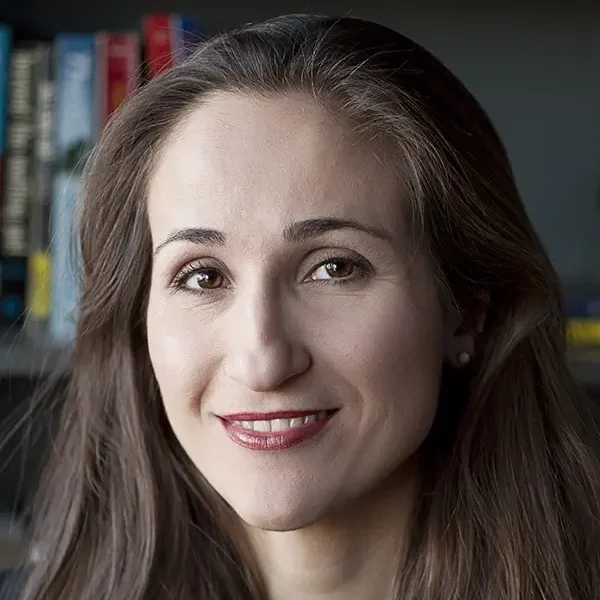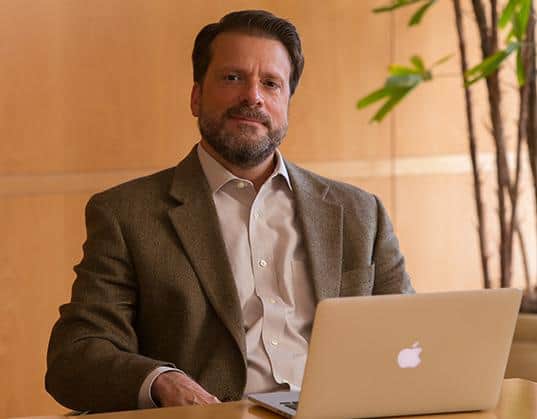By Eric Ruble
Congressional redistricting is underway following the official release of the 2020 U.S. Census results and states across the country are hashing out where their new lines will be drawn. With a contentious fight for control of the U.S. House of Representatives in 2022 looming, the process is receiving more attention than usual.

Associate Professor of Political Science and Public Policy
Most Americans’ understanding of the system is still lacking, according to three USC Sol Price School of Public Policy professors, and a fear of polarization and distrust in the electoral system continues to proliferate. They suggest many concerns can be alleviated through independent redistricting commissions – but only if the public is well-informed on how they help.
A growing attitude of distrust
New research from a team led by USC Price Associate Professor Christian Grose shows that voters are more likely to believe the redistricting process is equitable and gerrymandering is not a problem when they learn their state has an independent commission and recognize how it works. The team surveyed voters through the USC Price Schwarzenegger Institute’s California Issues Poll.
“When we show people that California and other states use commissions, people view the commission process as fairer,” Grose said.
Only 14 states use an independent commission to redraw district lines. In California, five Republicans, five Democrats and four Independent or third-party citizens oversee redistricting. In most states, however, state legislatures control all or some of the process.
“Giving elected officials the ability to draw their own lines is like letting the fox watch the henhouse,” said Mindy Romero, a research assistant professor in the Price School. “Independent citizen redistricting commissions are the best model we have right now in the country.”
Naturally, in states where local politicians manage redistricting, gerrymandering is commonplace. Grose pointed to Wisconsin and North Carolina as especially stark examples of gerrymandering in the last decade.

Both states have nearly equal numbers of Republican and Democratic voters, but Republicans filled a disproportionately high number of House seats. In 2016, Democrats received 47% of the statewide popular House vote in North Carolina. However, they won just 23% of the seats as reported by The Washington Post.
Grose notes that while lawmakers often protect their own party, they sometimes also work to ensure incumbents are reelected, such as the 2002 midterm election in California.
“Commissions aren’t totally insulated from politics, but it makes it harder to have these egregious minority-rule states,” Grose said.
Voter education remains an obstacle
Even in the 14 states with independent commissions, informing people about the process is a considerable challenge.
“The baseline knowledge of redistricting institutions in politics and policy in general is relatively low,” Grose shared.
Romero says implementing an independent commission is only the first step in rebuilding trust in the system. “We need to make the public aware of what is happening behind closed doors and what the consequences are,” she said.

“It’s not just having a good model, it’s also making sure that the public is educated about it, that they trust in it and that it’s fully transparent.”
Romero said a sound census is the foundation of any reliable redistricting process. However, like other political institutions, the American census has recently been plagued with misinformation. Romero said the new census results showing an increasingly diverse country could make some people uncomfortable; non-Hispanic whites now account for roughly 58% of the population, compared to 64% in 2010.
“There are many groups that are going to feel threatened by that,” Romero said.
Romero believes “a big public education component” is one part of ensuring the electorate knows about how its state redraws lines. Grose added that academics have an important role to play in highlighting the issues, and that they need to focus less on partisan outcomes.
“We need to think about what people perceive as fair,” Grose said. “Scholars need to start focusing on the impact of institutions on fairness and attitudes that voters have regarding legitimacy.”
A small but significant step
Jeff Jenkins, provost professor of public policy at Price, suggests that since gerrymandering is only a small part of the problem influencing the bipartisan divide in America, eliminating it would result in an accordingly small part of the solution.

Provost Professor of Public Policy, Political Science, and Law
Judith & John Bedrosian Chair of Governance and the Public Enterprise
Director, Bedrosian Center
Director, PIPE Collaborative
“You can make the decision makers explicitly non-partisan, but some people will still react negatively to them – as they are ‘non-elected bureaucrats’ and ‘experts,’” Jenkins said. “Plus, the party that would appear to ‘lose’ in the new redistricting will inevitably claim ‘shadow partisanship’ on the part of the independent commission.”
Moreover, Jenkins says that while some research demonstrates independent redistricting leads to better outcomes, one recent study showed “independent commissions may not be as politically neutral as theorized.”
Still, he says even some progress could generate meaningful results.
Jenkins shared, “In a world of hyperpolarization and deep politicization – even on seemingly straightforward topics, like vaccinations in response to a pandemic – independent redistricting would be a step in the right direction. Any change that would remove explicit partisanship from the political process would be a useful thing.”
The electorate must have faith in the democratic process in order for it to endure. Romero believes partisan commissions deteriorate the election system for both major parties, regardless of which one is in control of redistricting.
“When political winds change and maybe your community isn’t benefitting from that gerrymandering anymore, you’re going to feel the negative [effects] very clearly,” Romero said.
Many analysts believe that the Jan. 6 insurrection was a direct result of distrust in America’s election system, fueled by widespread misinformation. While tackling the latter issue is an enormous task, allowing people to gain a better understanding of how their representatives are elected – and how their districts are formed – could help appease frustrated voters.
“The more fair the process can be before things are done, the easier it is to accept the outcome,” Grose said. Complex problems often require complex solutions, and redistricting reform is just one facet of a much larger strategy to boost faith in elections. But if Americans better understand how the process works in their state, they may be more likely to trust our democratic process. And if they discover their local system is inequitable, they will be well-informed to enact change.